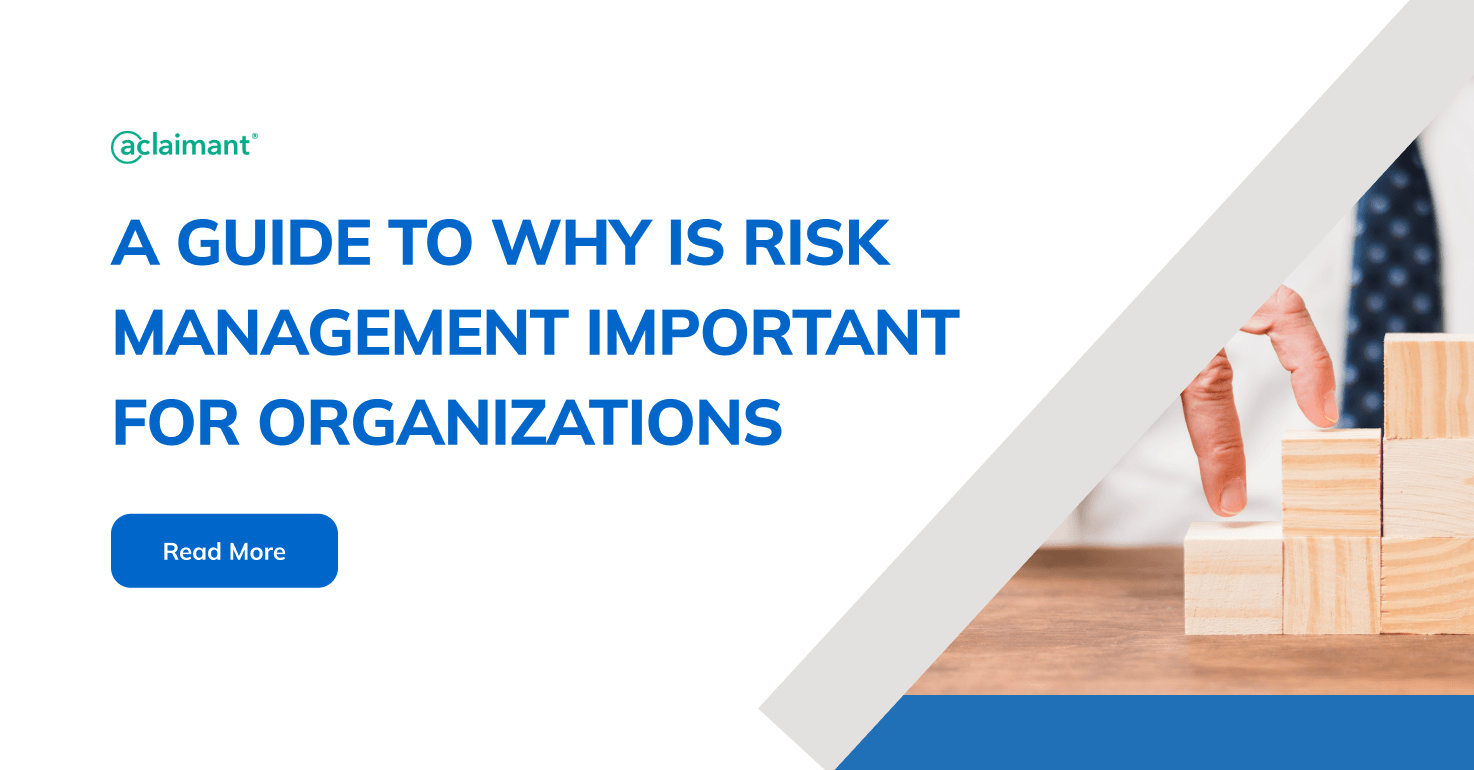Exploring the Expanding Importance of Risk Management in Business Strategy
Exploring the Expanding Importance of Risk Management in Business Strategy
Blog Article
The Crucial Relevance of Risk Management in Achieving Business Goals
This is where Risk Management actions in, giving an organized approach to identifying, evaluating, and mitigating prospective barricades to proceed. As we discover the critical role of Risk Management in accomplishing organizational goals, one can't wonder but aid: just how does this convert into real-world success?
Understanding the Principle of Risk Management in Company

The Integral Role of Risk Management in Strategic Preparation
Integrating Risk Management into calculated preparation acts as a secure for companies, anchoring their long-term strategies with a strong structure of preparedness and resilience. It operates as the organization's radar, identifying potential threats and vulnerabilities that might interrupt the course in the direction of attaining their mentioned purposes. Risk Management supplies a structure for anticipating uncertainties and devising suitable reactions, making sure the company's survival and success also when faced with adversity. By incorporating Risk Management right into strategic planning, organizations can transform these uncertainties right into possibilities for development and technology. This strategic interweaving of Risk Management promotes versatility, making organizations more robust and allowing them to browse the ever-changing service landscape confidently. As a result, Risk Management comes to be a vital tool in tactical planning, crucial in safeguarding lasting success.

Techniques for Identifying, Assessing, and Focusing On Dangers
Navigating the complicated landscape of risks calls for the application of particular strategies for their identification, prioritization, and assessment. The process starts with Risk recognition, employing devices such as SWOT analysis, which aids in identifying possible risks and possibilities. Next, Risk assessment is carried out to identify the potential effect and chance of each Risk. Devices such as Risk matrices and impact-probability charts are utilized for this. Threats are prioritized based on their prospective effect and chance, allowing organizations to focus their sources on critical risks. This methodical technique ensures a detailed understanding of the Risk landscape, enabling organizations to make educated choices and properly manage dangers to accomplish their objectives - importance of risk management.
Protecting Organizational Operations Via Reliable Risk Management
In business landscape fraught with unpredictabilities, reliable Risk Management plays a crucial function in securing organizational operations. It functions as a safety guard, minimizing the damaging impacts of potential threats and guaranteeing the smooth performance of all processes. By recognizing and examining prospective threats, Risk Management makes it possible for organizations to establish durable contingency strategies. This precautionary strategy aids in keeping operational security, even when confronted with unexpected scenarios. In significance, Risk Management is the lifeline that keeps the business operations afloat among rough waters. It ensures not just the survival but the lasting growth of a company, making it an important device in attaining business purposes. Companies have to invest in detailed Risk Management methods to protect their operations.

Converting Prospective Dangers to Opportunities: The Power of Risk Management
While prospective hazards might at first look like barricades to organizational success, reliable Risk Management can change them right into opportunities. A Full Report proactive method to run the risk of Management includes determining, assessing, and prioritizing dangers to design strategies that turn them right into potential benefits. This process necessitates the development of a risk-aware culture within the organization, encouraging individuals to see dangers as potential catalysts for modification and development, instead of plain threats. importance of risk management. Through this lens, potential risks come to be possibilities to introduce, boost procedures, and enhance strength. Therefore, by leveraging the power of Risk Management, companies can not just guard their procedures yet also spur development and attain their objectives in an uncertain organization atmosphere.
Case Studies: Success Stories of Risk Management Driving Company Objectives
Successful execution of Risk Management approaches has actually produced excellent lead to numerous businesses, underscoring the merits of this approach. International business like Microsoft and Google, as an example, have leveraged Risk Management to lessen dangers and exploit opportunities, driving their organization purposes onward. Microsoft's aggressive Risk Management technique helped it pivot promptly during the 2020 pandemic, transitioning to remote job smoothly, therefore preserving productivity. Google, by analyzing and alleviating potential risks in this content its cloud-based solutions, has guaranteed undisturbed service, thus strengthening consumer count on. These instances show how effective Risk Management can not just guide services clear of prospective risks yet likewise guide them towards their tactical purposes. Thus, Risk Management is essential to the search of organizational goals.
Verdict
To conclude, Risk Management is fundamentally important in attaining business objectives. It supplies an organized approach to identifying, evaluating, and attending to potential threats and opportunities. Greater than simply mitigating threats, it also fosters innovation, resilience, and lasting growth. By incorporating Risk Management right into strategic preparation, organizations can better browse unpredictabilities, safeguard operations, and capitalise on opportunities, thereby aligning with lasting goals.
At its core, Risk Management is the process of recognizing, analyzing, and attending to possible dangers that could adversely affect an organization's operations or goals. Next, Risk evaluation is conducted to identify the potential influence and pop over to this web-site possibility of each Risk. Dangers are focused on based on their prospective effect and likelihood, allowing companies to focus their sources on high-priority threats. By determining and assessing prospective hazards, Risk Management allows companies to establish robust contingency strategies. A proactive technique to risk Management entails identifying, evaluating, and focusing on risks to create strategies that transform them into prospective benefits.
Report this page